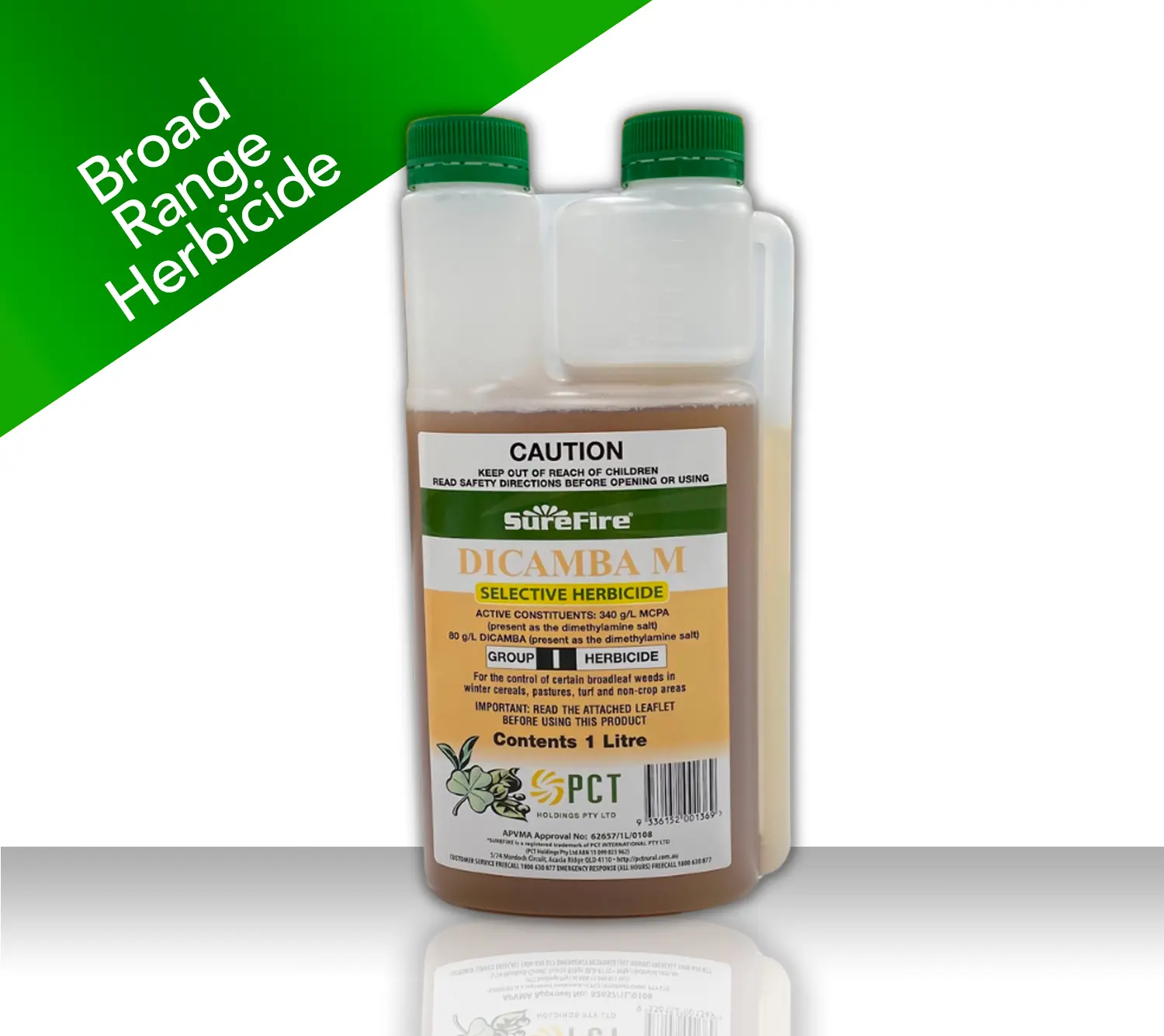Step 1: Understand When to Spray
Timing is everything. Herbicides are most effective when weeds are small and actively growing. Spring and autumn are the ideal seasons for broadleaf control, but even in cooler months like May, you can still achieve excellent results—just be sure there’s no frost around, and temperatures are mild.
Avoid spraying:
-
When rain is forecast within 48 hours
-
In windy conditions (to prevent drift)
-
During extreme heat or cold
Step 2: Choose the Right Application Type – Spot or Blanket Spray?
There are two main spraying methods: spot spraying and blanket spraying. Choosing the right one depends on how severe your weed infestation is.
Spot Spraying
-
Ideal for small, isolated patches of weeds
-
More targeted and uses less chemical
-
Reduces stress on your lawn
Blanket Spraying
-
Best for lawns with widespread weed infestations
-
Ensures consistent coverage across the entire area
-
Ideal when using selective herbicides like Bow and Arrow or Dicamba M
Pro tip: Always read the label. Some herbicides may require a blanket spray to be fully effective, while others are perfect for spot treatment.
Step 3: Calibrate Your Sprayer
This step separates the pros from the weekend warriors. If you’re using too much or too little product, your results will suffer—and you could even damage your lawn.
Here’s a simple way to calibrate your sprayer:
- Fill your sprayer with just water.
- Mark out a 10m² section of your lawn.
- Spray the area evenly, timing yourself and noting how much water you used.
- Now calculate how much product you’ll need based on that output and the herbicide label rate.
This helps ensure:
-
Even coverage
-
Correct chemical rate
-
No risk of under or overapplication
For example, if the label says to apply 50mL per 100m², and your sprayer uses 1L of water to cover 10m², you’d mix 5mL of herbicide per litre of water.
Step 4: Use a Surfactant
One of the most overlooked steps in DIY weed control is adding a surfactant. Surfactants break the surface tension on weed leaves, helping the herbicide stick better and be absorbed more effectively.
At The Lawn Shed, we recommend Spreadwet, a premium-quality surfactant that’s compatible with most liquid herbicides. Just a small amount added to your spray mix can make a big difference in performance, particularly on small or glossy-leaved weeds like clover or oxalis.
When it comes to controlling broadleaf weeds in your lawn, it’s not just about using the right herbicide—it’s about applying it the right way. Many homeowners waste time and money on weed treatments that don’t work, not because the product is wrong, but because the method is off.
If you’ve already identified your weeds and selected an appropriate herbicide (like Bow and Arrow or Dicamba M), this guide is for you. We’ll walk you through the essential steps that will help you get professional-grade results, with less stress and more success.
Step 5: Apply with Care
Whether using a knapsack, battery sprayer or pressure sprayer, consistency is key.
-
Maintain a steady walking pace
-
Keep your nozzle 30–50cm from the grass
-
Overlap slightly with each pass
-
Spray in a grid pattern for even coverage
Avoid spraying in full sun on hot days to prevent evaporation before absorption. Early morning or late afternoon is usually ideal.
Post-Application Tips
Once you’ve sprayed:
-
Don’t mow for 2–3 days before or after application. Mowing too soon removes foliage and reduces uptake.
-
Don’t water the lawn for 48 hours post-spray (check your product’s label).
-
Wait before reapplying. Some stubborn weeds may need a follow-up treatment in 2–3 weeks.
Recommended Products
At The Lawn Shed, we stock top-performing herbicides and supporting products to help you get the job done right:
-
Bow and Arrow – Excellent for bindii, clover, oxalis and other broadleaf weeds; safe on buffalo
-
Dicamba M – Strong and cost-effective broadleaf killer (not for use on buffalo)
-
Spreadwet Surfactant – Helps spray stick and penetrate leaf surfaces for better results
-
Knapsack and battery-powered sprayers – For consistent and easy application
-
Spray Indicator Dye – Add to your tank to see where you’ve sprayed and avoid overlap
The Bottom Line
Anyone can control broadleaf weeds—it’s all about doing the basics right. Take the time to calibrate your sprayer, use a surfactant, and choose the appropriate spray method for your lawn. With a bit of preparation and care, your lawn will be on track to stay weed-free and looking brilliant this winter and beyond.
Need help choosing the right herbicide or sprayer? Reach out to the team at The Lawn Shed—we’re here to help you grow better.

